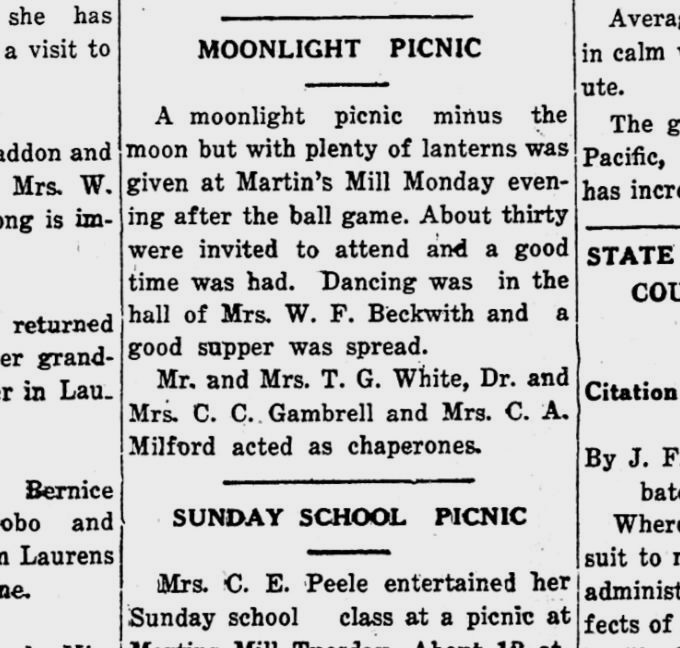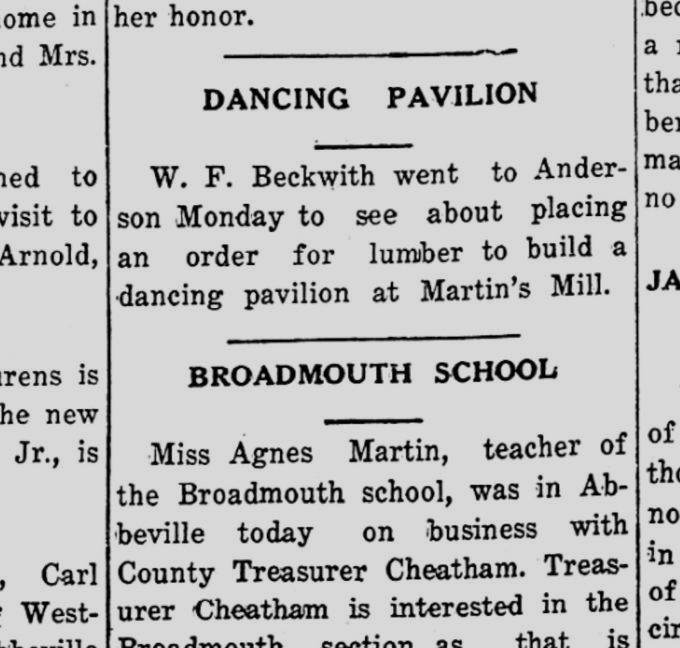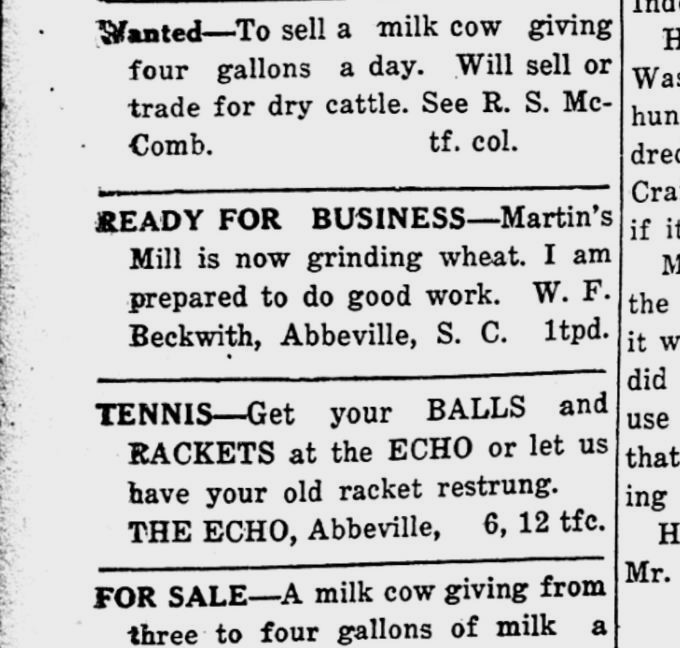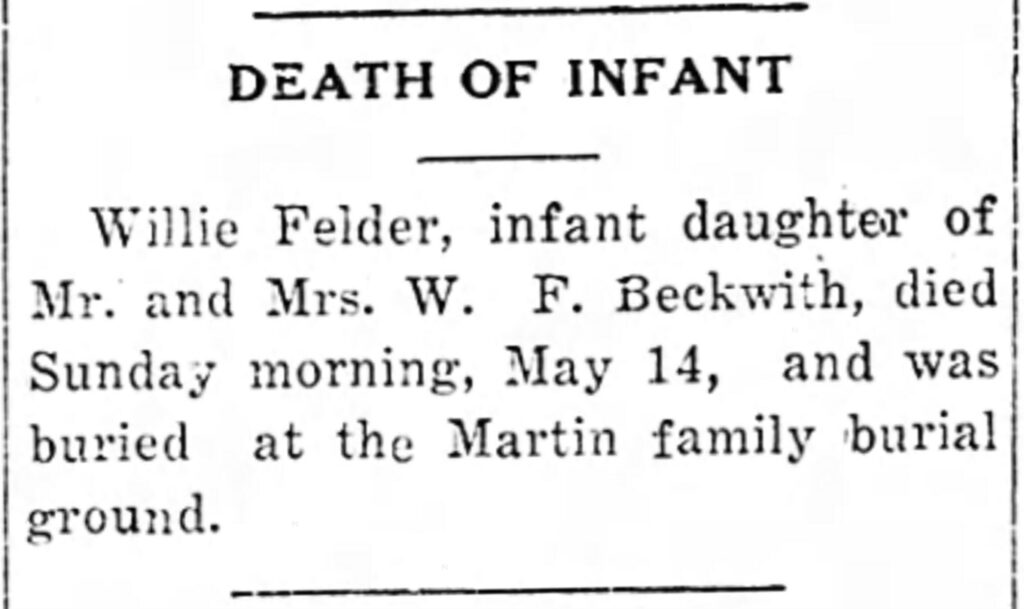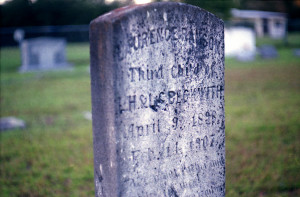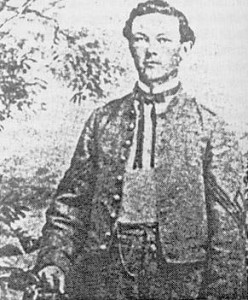I’m posting these as they are but please know that they are one writer’s interruption of events. Ug. Jennings Beckwith was said to have renounced his title during the revolution, so all of the “sir” and “baronet” stuff makes me cringe almost as much as his “romantic adventures.” Do believe that a woman with similar proclivities would not have been remembered so fondly by history. “No wife to mourn him” — we have absolutely no idea where the mother of James Pierson Beckwith/Beckwourth and siblings was at this time but do know that Jennings lived with her as his wife. The second article talks about the plight of a attractive young women being held in slavery. It says that “…girl captives were sold to wealthy elderly men, but the custom in no case compelled the young things to marry their proprietors.” Well, true. The custom was not to marry at all, but to imply that these girls weren’t used in whatever manner the master wanted is false to the core.
Anyway, take it for the interesting story that it is. I’m sure there is some truth mixed in.
Source:
Altoona Tribune (Altoona, Pennsylvania)
4 Apr 1947, Friday
Page 6
This Morning’s Comment
By Henry W. Shoemaker
A DON QUIXOTE OF THE SLASHERS, OLD NEWSPAPER, TELLS OF PASSING MAN ADVENTURE ON SIR JENNINGS BECKWITH, BART, A GENTLEMAN ADVENTURER OF THE SOUTHERN PENNSYLVANIA FRONTIER, A MAN OF PEACE LIKE COL. CONRAD WEISER.
AN old time Philadelphia newspaper says:
“LEATHER Stocking–died, at Mount Airy, Richmond county, Virginia, Nov. 13, 1835, Sir Jennings Beckwith, Bart., son of Sir Jonathan Beckwith, Bart., and grandson of Sir Marmaduke Beckwith, Bart,m aged 72 years. Sir Jennings was the “leather stocking” of the Northern Neck. Much of his life was spent wandering on the frontiers of Virginia and Pennsylvania and in the far west, on hunting excursions with the Indians. Of late years he would live with such as would fish with him in summer, fox-hunt in winter. Within the last 12 months he has slept on the river shore in the sturgeon season, and been in at the death or search of sport. He had insuperable objections to spending time profitably. Consequently he lived and died a poor man.
“NO wife mourns him, as far as is known, but he had figured in one way or another in at least a score of romantic adventures, or a chivalrous, and all creditable to the fair sex. He was one of those who came upon a poor pioneer girl who had been captured by Indians, stripped and tied to a tree by her wrists and ankles with buffalo tugs while her captors tortured her by throwing sharp knives to see how close they could come without hitting her. As her face was towards the tree, she could not know when the weapons were launched, until she heard their ‘whirr’ and noted them imbed themselves in the bark, within a fraction of an inch of her palpitating flash. Sir Jennings shot a couple of the red fiends, cut her bands, and threw his hunting cloak about her. It was an affecting episode, and by the practices of chivalry, he felt he should marry the beautiful young person, but the life of a knight errant makes poor husband material, and he left her to become the joy of a more stable individual.
“AT Redstone, now Brownsville, Fayette county, Pennsylvania, Sir Jennings arrived shortly after Mrs. George Kincaid, a young pioneer widow had been brought to the nearby Indian village, soon after her husband had been murdered by the redskins. Her hand in marriage was sought by a tottering, toothless old chief, but she indignantly refused to become the spouse of such a bag of dried gristle, and he threatened he would burn her in various parts of her body until she accepted him. Sir Jennings cuffed the old wreck about a little, and put him in his place. Later Paul Lesh, a French Canadian trapper, approached the kindly baronet and asked him if he could secure Mrs. Kincaid as his wife. He would adopt the four little ones, and take all to Three Rivers in Quebec where he was well to do. Sir Jennings introduced the couple, and as she liked the young Frenchman’s looks, they were married by the missionary of the Brethren (Dunkard) church and guarded by the nobleman and his aides, started for the north.”
“SOMETIMES Sir Jennings was not so successful as a peacemaker and matchmaker,” says an authority on his career. “In one of the fierce raids around Martinsburg, W. Va., a girl was taken to Canada by the Indians, and offered for sale; there were several would-be buyers but the lovely captive preferred a young French trader, named Georges Plata and her Indian foster relatives allowed her to make her choice, which of course fell on the handsome Frank. The money was paid over, but she stipulated she would not marry him because of difference in religion until she had asked her parents’ consent. The young lover was so enamored he agreed to go with her to her parents’ home, finding them on Piney Run, just south of the Pennsylvania line, in Maryland. On the long journey, climbing mountains, carrying her in his arms across swift rivers, storms stayed in caves, cooking and eating together, the girl’s passion overflowed, and she felt this would be the one and only love of her life. Arrived at the cabin on Piney, things were different. The religious element was not insuperable, as Conewago Chapel was not far away, and they had many friends in the beautiful Schlegel valley, but the family disliked all Frenchmen, as ‘allies of the blood-thirsty Indians, and said they wished Col. G. Washington had to the mall as he had to the Sieur Jumonville; Duquesne, even though he was a Huguenot, suited them no better, although they were of the same persuasion, Huguenot refugees, from the Palatinate. They were rude to the ‘voyageur’ and ordered him to be gone, but the girl forgetting her filial responsibilities, decided to slope with her adorer during the night, on two of her parents’ horses. Her loss was discovered before daylight, and a chase was begun, overtaking the couple on Swift Run, close to Hunterstown, in Strabane township, now in Adams county, Pennsylvania. Sir Jennings Beckwith, friend of the afflicted and downtrodden, was seated on the Dutch porch of the Hunterstown inn, famous for its huge timbers and supports, now the Taughinbaugh residence, waiting for the dinner bell, when he noted a commotion down the road. Striding there with all the lofty dignity of Don Quixote, he found the girl’s family trying to tie the struggling beauty across her pony’s back, and some of her brothers cudgelling the unfortunate bleeding scalp of the courier de bois. The very presence of Sir Jennings commanded respect, and with his rapier he cut the sweet girl loose, and placed her properly upright in her deep saddle. He drove off the angry Dutch boys, and tried to adjust matters, but they were too ‘dumb Dutch,’ and hard as set lime plaster.
“THE baronet, resolved to make the best of matters, brought them all to the inn to feast on the wild turkey he had shot earlier in the morning, and close the differences by the old folks re-purchasing their daughter from Plata. When the voyageur saw it was hopeless, with such stubborn people he accepted the sum, with many tears, and protestations, and after the dinner, said a courtly ‘Adieu’ all around, mounted his Canadian chunk, and departed for the north. Sir Jennings was disappointed, but decided to escort the family home to near Taneytown, lest they scourge the girl, now she was in their power again, and saw to it she was treated with respect. Sir Jennings never lost interest in her, and when she married one of the wealthy McClary boys, was a conspicuous guest at the wedding feast, and addressed by the lovely bride as ‘Uncle.’”
ACCORDING to Kerchevla’s great history of the settlement of the valley of Virginia, her married life was tranquil and she raised a splendid family at Morgantown, W. Va. As to the unhappy voyageur, history apparently says more of him. At the proper time, it can be told. “There is nothing new under the sun.”
THE compiler and wife saw the Clifford family of knife-throwers do the same act as Sir Jennings let himself in on, 150 years later in the garden of the ancient hotel at Steinsville, Lehigh county, in June, 1914, only the pretty Maria Clifford was not disrobed but wore an Annie Oakley outfit.
NO doubt “Os” with his memory “wax to receive, marble to retain,” can describe many such knife-throwing acts in old time altoona playhouses like Harry Davis’ famous “Eden Musee.”
Source:
Altoona Tribune (Altoona, Pennsylvania)
5 Apr 1947, Saturday
Page 6
By Henry W. Shoemaker
MORE ON SIR JENNINGS BECKWITH, BART, THE DON QUIXOTE OF THE SLASHES, ALIAS “DOUGHTY DEEDS,” NOT ONLY A MIGHTY HUNTER BUT FRIEND OF STRICKEN HUMANITY: HOW LATE DR. J. H. KALBFUS, FAMOUS PENNSYLVANIA GAME PROTECTOR, EARNED THE NAME OF “ANTELOPE JOE.”
SOME day a biographer will pick up the shein and prepare a full size story of the life of Sir Jennings Beckwith, Bart., mighty hunter who ranked with Ellison, Lybrook and Meshach Browning, as nimrods of the Virginia, Maryland and southern Pennsylvania big game fields which make Col. T. Roosevelt’s ‘African Trails,” tamer by comparison.
YET, it was as a feudal knight that Sir Jennings is best remembered. An unpublished account has him journeying to Philadelphia to secure the abolition of the ducking stool, about which the old Franklin Repository, November 16, 1824, has to say:
“SOMETHING new in Pennsylvania–A woman by the name of Nancy James was indicted at Philadelphia, for being a common scold, tried and found guilty. She was sentenced to be placed in a Ducking Stool and plunged into the water. The sentence was to be executed on Wednesday last. This punishment for scolding women is rare in our state but, as it is getting into fashion, we would advise those of the ‘gentler sex’ who have a propensity to ‘war in words’ to be cautious, lest they too go beyond the latitude allowed to females in the kitchen. Punishment was not carried out, as it seemed to her attorneys more dignified for her to accept a whipping which was administered in the work house at Clockley, by the cooks with their pot sticks, than to be ducked publically by the Schuylkill’s shore.
“NANCY limped after the punishment, as she left the work house, accompanied by her husband, and legal aides, and entered a hackney coach to drive back to her home on Currant Alley, Philadelphia.”
IT is said that “Doughty Deeds” having read of the case, came to Philadelphia and addressed the mayor and aldermen, with the result that the ducking stool was abolished, much to the regret of women who mind their own business, and resented “back yard shrews.” Nancy James was never in trouble again, though folks nudged one another when her comely, trim figure, basket on her arm, passed them on markets, as “the girl who exchanged a whipping for a ducking.”
“DOUGHTY Deeds once traveled to Detroit to try and secure the freedom of Polly Moore, stolen by Indians near the Potomac headwaters and sold to a Tory named Abe Stogwell, who abused her shamefully. Sir Jennings could not command the price her cruel “lord and master” named, but by threatening to have him prosecuted as an English sympathizer, compelled him to treat his lovely young chattel more respectfully.
[Jess: There is something more here. There is SO MUCH more to this story and I need to find it. Somebody doesn’t just drop by Detroit because an old dude is being mean to their slave.]
IN those days the flower of Pennsylvanian and Virginia girl captives were sold to wealthy elderly men, but the custom in no case compelled the young things to marry their proprietors. Often fine young men fell in love with these unhappy girls and if able bought them at an advanced price from the old men, and married them. Old Stogwell was not one of these, and raised his price for Polly, every time a new admirer came along. Polly, is is said, hoped that the baronet would want her for himself, and could “put the blocks” on Stogwell, but he told her he had eased her burdens, and to send for him if Ave got ‘tough’ again. Fate handled her case in another way, as the old man paid his debt to nature, and she soon became the wife of a prosperous French fur buyer.
BORN two years prior to Braddocks’ war, Sir Jennings Beckwith, Bart., took part in some of the last buffalo hunts in southwestern Pennsylvania, Maryland, and Virginia. Kercheval, in his almost contemporaneous history of the Valley of Virginia published in 1833, saying that by 1772, buffaloes had become scarce in the Old Dominion, while Rev. Trempi tells of a herd of bison driven from Somerset county the same year. Other game was plentiful for a century afterwards, but the bison being unwieldy brutes were soon run down.
A NOTED Chambersburg sportsman recounts in the Franklin Repository of May 21, 1833, a thrilling account of the wild pigeons, in which he says: “I have witnessed the migration of the wild pigeons in Pennsylvania. I have also seen the roosts left by them. When they have frequented one place for some time it is a scene of desolation. The tender grass and underwood is destroyed, the surface is strewn with large limbs of trees broken down by the weight of the birds, and the trees themselves killed as completely as if girdled with an axe. When these roosts are first discovered the people for miles around visit them in the night, with guns, clubs, pots of sulphur and various other instruments of destruction. In a few hours they fill many sacks with dead birds and load their horses with them.
“I visited the remains of a breeding place in western Pennsylvania. About 1 o’clock the pigeons began to return to their nests in great numbers. They were flying with great steadiness and rapidity at a height beyond gunshot. It took two hours for this immense flock to fly over one spot. The noise was so great that it terrified my horse and it was difficult to hear the sound of one’s own voice.”
KERCHEVAL says that game of various kinds kept the settlers from starving, and no doubt the squabs of the wild pigeon were considered choice morsels by the hungry pioneers.
It was a peculiar situation which preserved the bison for a time. If they crossed the state line into Pennsylvania, the nimrods of Penn’s woods resented these “long knives” or “outlanders” following and killing them. It is probable that the bison herd in 1772, described by Rev. Trempi as being driven from Somerset county in Maryland, was the work of southern hunters, so could be killed there without interference.
DR. TREMPI describes these as “probably the last bison herd seen in Somerset county. Yet the last bison in “frosty Somerset” was not killed until after 1810, when John Yutsey, alias “Gipsy John,” the famous Bessarabian pioneer, shot a giant bull in the “glades.”
IN western Virginia (now West Virginia) they hung on until 1825, when several bison were killed on Tygart river. When Sir Jennings stooped to give his first bison, a yearling bull what he called the “coup de grace,” it sought to rise, hooking him under his arm with its sharp horn, and throwing him high in the air, as it got up. Lucky baronet, as, if the brute had gone done with him, he would have been crushed to a pulp.
AN old timer in Colorado told the compiler about the late Dr. J. H. Kalbfus–Pennsylvania’s good grey game protector,” who he called “Antelope Joe.” When Kalbfus, a slim beardless youth, first came to the big game field of the west he got hooked the same way in trying to cut the throat of a wounded antelope, the only difference being that in trying to rise, it was not powerful enough to toss the young gunner, but its horn came out of its socket still imbedded in in Kalbfus’ sinews. For a long time Kalbfus’ arm was stiff, but he recovered and shot so many antelopes for the homesteaders on prairie schooners crossing the plains that he became the “Buffalo Bill” of antelope killers, and was known throughout the Rocky mountain states as “Antelope Joe.” Prior to going west young Kalbfus had some prowess as a wolf and bear slayer, along Shreader run. Bradford county, and in northern Lycoming county when only a boy in his teens.

